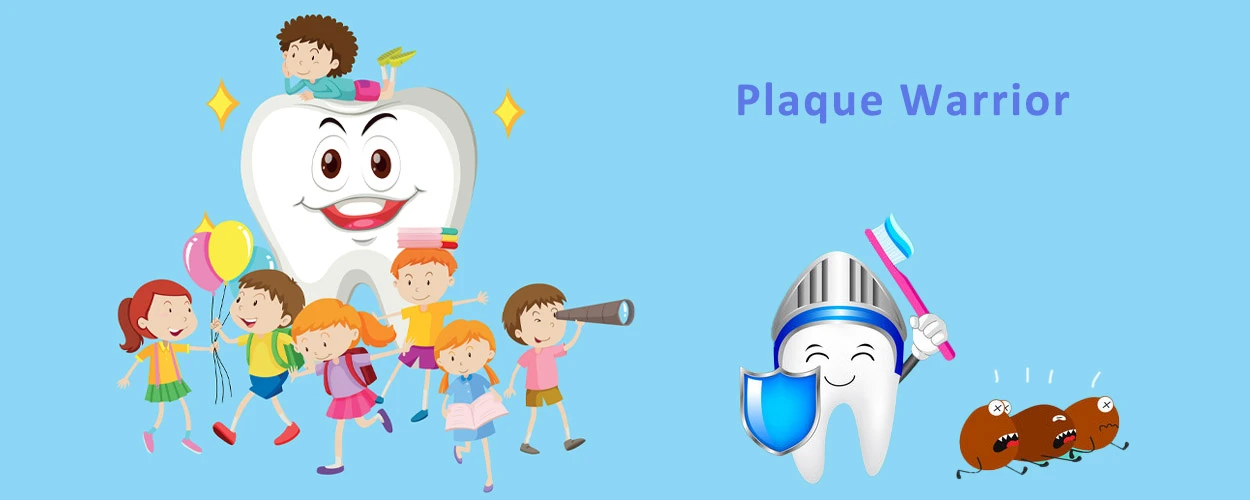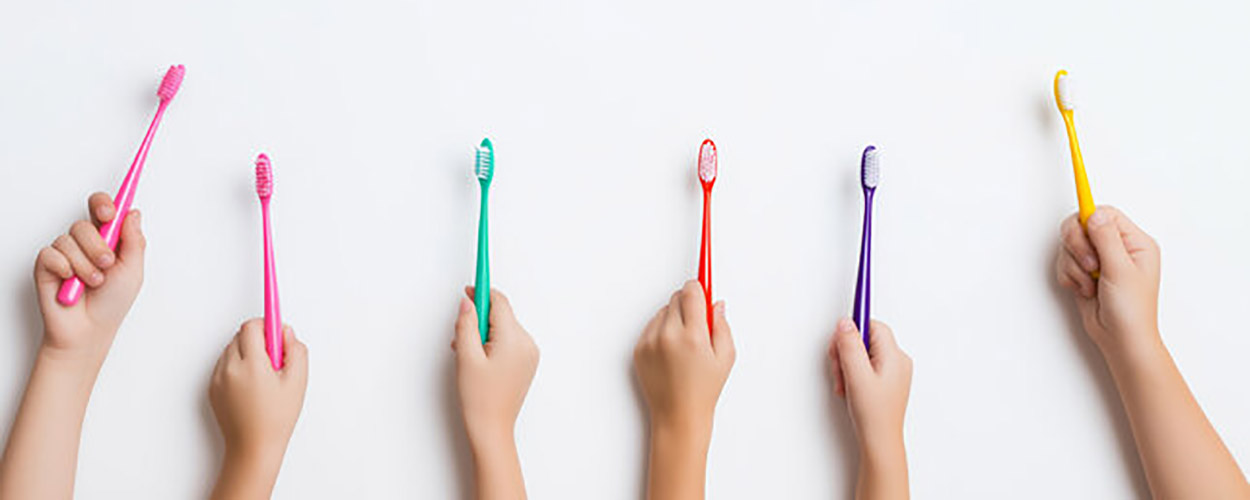La santé bucco-dentaire constitue un déterminant biologique critique du développement systémique pédiatrique. OMS Les données indiquent 514 millions d'enfants présentent du monde entier des caries non traitées en dentition primaire. Caries de la petite enfance (ECC) représente la maladie chronique la plus répandue chez les enfants de moins de six ans. Derrière, il reflète les parents’ malentendu cognitif et manque de méthodes dans l'éducation orale. Dans cet article, Un dentiste pédiatrique qui s'entraîne depuis plus de dix ans résume les stratégies de formation professionnelles et pratiques pour aider les parents.
1. Nutritional intervention during pregnancy: Strengthening the innate Foundation of oral health
Tooth germs start to form from the 6th week of the fetal period. The intake of calcium, phosphorus and vitamin D during pregnancy directly affects the development of tooth enamel. It is recommended that pregnant women supplement 1000mg of calcium daily (equivalent to 500ml of milk +50g of cheese) and increase their sources of vitamin D (such as deep-sea fish and egg yolks can be consumed). Clinical studies have confirmed that the vitamin D level of mothers during pregnancy is significantly negatively correlated with the incidence of dental caries in their children at the age of 6 (P<0.05).
2. 0-1 ans: Key guidance for oral tactile sensitivity period
After a baby is born, gum massage is necessary. Use a silicone finger brush to gently clean it in the morning and evening every day. When the baby teeth at 6 months of age come in, it is recommended to use the “three-zone cleaning method” : divide the oral cavity into the left buccal area, the right buccal area and the tongue surface area. Use a 45-degree Angle brush to touch the gum line and gently brush each area for 10 secondes. The focus at this stage is not on removing food residues, but on establishing neural reflex associations.
3. Cross-sensory training: tactile and gustatory joint development
- Tactile: Use silicone mâts d'aligneur of different textures (protrusions/stripes/waves) to stimulate gum development
- Gustatif: Introduce naturally bitter foods (brocoli / chou frisé) Après l'âge de 2 to reduce dependence on sweet foods
- Visuel: Observe the distribution of dental plaque using an ultraviolet irradiation instrument
Encouragez l'exploration de mastication et la conscience de la plaque à travers des jeux de rôle comme “Guerrier de la plaque” Pendant le brossage. NOUS. La recherche comportementale pédiatrique indique que les routines gamifiées améliorent la conformité par 73%.

4. Tool science: Tools determine the quality of habit formation
Évolution de la brosse à dents: Use silicone material before the age of 1, switch to super soft bristles and cartoon design from 2 à 4 ans, and only use electric toothbrushes after the age of 5.
Toothpaste advanced method : Use fluoride-free gel in the early stage of tooth eruption. After the age of 2, transition to children’s toothpaste containing 500ppm of sodium fluoride (the dosage should be controlled to the size of a grain of rice).

5. Horloge diététique: Establishing biological rhythmic protection
Formulate the “322” dietary rules:
- 3-hour interval : there should be at least a 3-hour interval between main meals and snacks to ensure that saliva fully neutralizes the acidic environment
- 2 types of foods to avoid : Aliments collants (gummy candies, preserved fruits) and long-lasting sugary foods (sucettes, boissons sucrées) should be eaten sparingly or avoided altogether
- 2 essential items : At the end of each meal, you can have “refreshing foods” such as apple chunks and celery strips, ensuring a daily intake of 200g of high-fiber ingredients
Quand mâcher des pommes, the fibers rub against the surface of the teeth, which can remove dental plaque and food debris . Experiments show that continuous chewing of apples can reduce dental plaque coverage by 15%-20%. Crude fiber forms a “broom effect” during chewing, cleaning the residues between teeth and on the occlusal surface . The physical friction effect of celery fiber can reduce the risk of interproximal caries. Un total de 20 minutes of chewing exercise daily can increase the width of children ‘s dental arches (the Pont index increases by 0.2-0.5) . Dietary fiber adsorbs cariogenic sugars, reducing the time free sugars come into contact with the tooth surface.
6. Incitatif positif: Application of reward Mechanism
Create the “Teeth Defense Battle” points table: Brush your teeth in the morning and evening to earn 1 star each, and use dental floss correctly to earn an additional star. Accumulate 10 stars to redeem rewards such as toys and bedtime stories. Neurological research has confirmed that the dopamine reward mechanism can increase the efficiency of habit formation by 40%.

7. Fine management during the transition period: Special attention to during the tooth replacement stage
Ⅰ. Treatment of loose teeth during the tooth replacement period
Gently shaking 10 times a day can accelerate osteoclast activity through mechanical stimulation and promote physiological resorption of the tooth root . Experimental data show that regular shaking can shorten the cycle of deciduous tooth loss by 3 à 5 days . Une pression modérée peut activer l'activité des ostéoblastes dans l'os alvéolaire, creating a better bone guidance space for the eruption of permanent teeth.
Ⅱ. Permanent tooth eruption period
Utilisez des mâcher des aligneurs en silicone pour soulager l'inconfort des gencives. The elastic modulus of silicone material (0.5-1.5MPA) can precisely disperse the pressure on the gums and relieve swelling and pain during the eruption period . Thermal imaging detection showed that local blood flow increased by 35% after use. The wavy surface design of the gum can enhance the coordination of the masticatory muscle group and prevent asymmetry in the development of the dental arch caused by unilateral chewing . The hydrophobic property of food-grade silicone can reduce the adhesion of food residues and lower the incidence of gingivitis during the eruption period . Plaque tests show that the interproximal plaque index decreased by 23% after use.
Ⅲ. Establish a “Tooth Growth Diary” : Record the time/Angle/color of eruption
8. Élimination de la peur: Désensibilisation aux scénarios médicaux
De l'âge de 3, Les enfants sont régulièrement pris pour observer leurs parents’ processus de nettoyage dentaire, afin d'éliminer leur peur de l'inconnu par rapport à l'examen dentaire et au traitement. La pratique clinique a prouvé que les enfants qui ont plus que 6 Les visites dentaires à l'avance ont 58% Plus de coopération avec le traitement.

9. Examinations «périodiques»: Visites régulières au dentiste
Une fois que la peur de votre enfant des examens dentaires a été éliminée, Vous pouvez visiter le dentiste avec votre enfant régulièrement. Il est recommandé de visiter le dentiste tous les six mois à un an pour un examen oral et un nettoyage. Les dentistes peuvent détecter rapidement des problèmes dans la bouche de l'enfant, comme les caries dentaires, en particulier la détection précoce de problèmes tels que l'anti-mendibulaire, couverture profonde, etc.. L'âge de 4-6 ans est la période d'or pour le traitement orthodontique fonctionnel.

10. Parents’ Mise à niveau cognitif: Pour éliminer 5 Idées fausses du bon sens
| Les dents primaires doivent être remplacées tôt ou tard | Les dents primaires en décomposition entraîneront un développement anormal de germes dentaires permanents |
| No fluoride is safer | Une quantité modérée de fluorure peut réduire le risque de caries dentaire 25 pour cent |
| Le brossage dur est le seul moyen de se nettoyer | Un brossage excessif entraînera une augmentation de l'incidence des défauts en forme de coin |
| La soie dentaire est nocive pour les gencives | Une utilisation correcte peut supprimer 40% de plaque adjacente |
| La consultation n'est nécessaire que si vous avez mal de dents | Application de fluorure professionnelle chaque 3 les mois sont plus efficaces que le traitement |
Conclusion
La gestion moderne de la santé bucco-dentaire des enfants est entrée dans l'ère de la «prévention de la précision», qui oblige les parents à maîtriser les techniques d'intervention multidimensionnelles du bio-psycho-social. La santé orale est une partie importante de la santé générale. Cultiver de bonnes habitudes de santé bucco-dentaire chez les enfants dès le plus jeune âge n'est pas seulement un moyen de laisser les enfants avoir une bouchée de dents saines et belles, mais aussi un moyen de protéger leurs sourires brillants pendant des décennies à venir.


